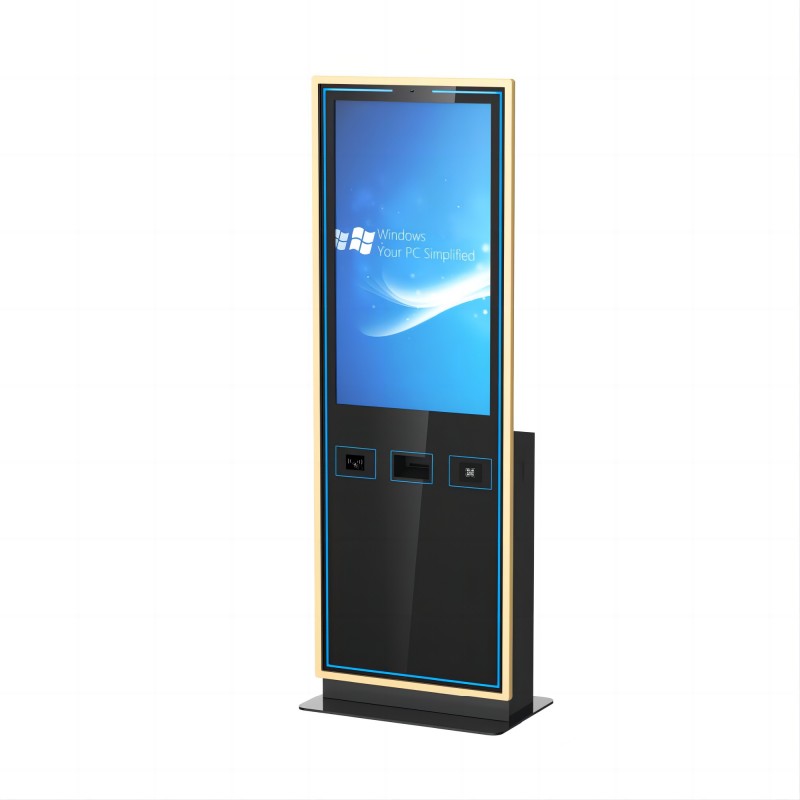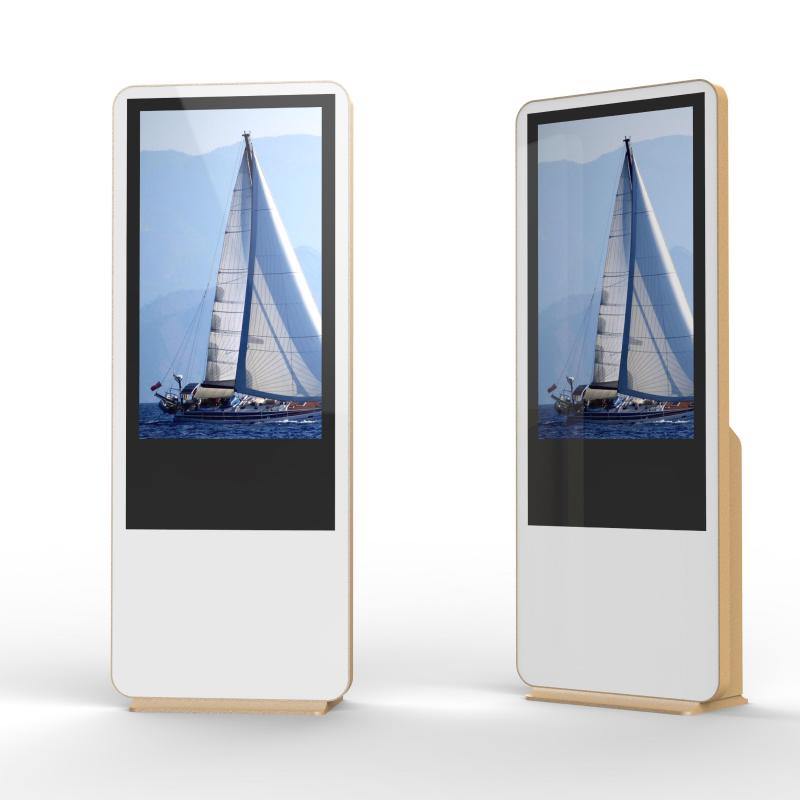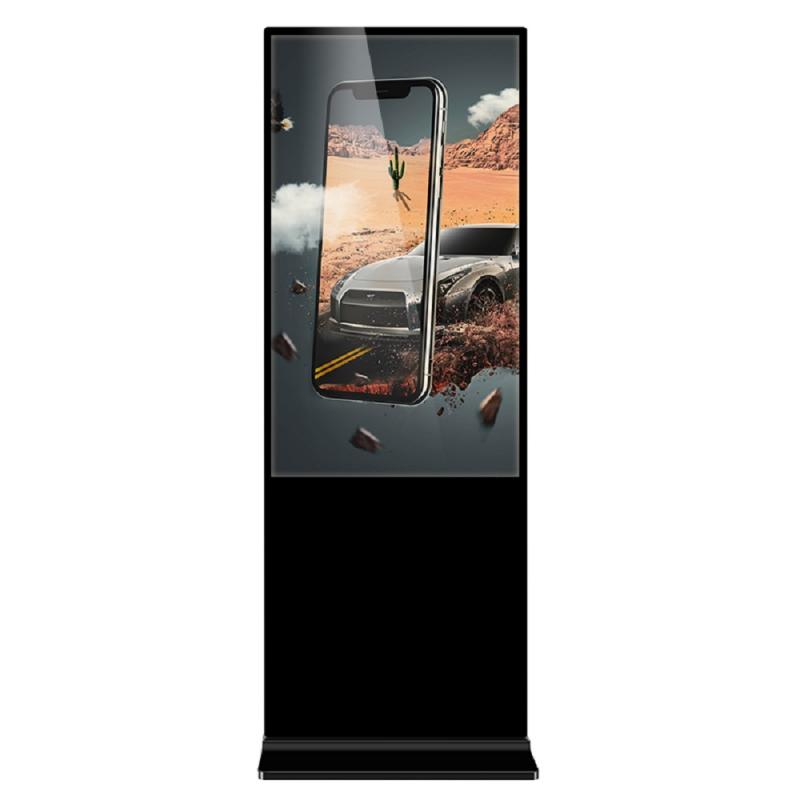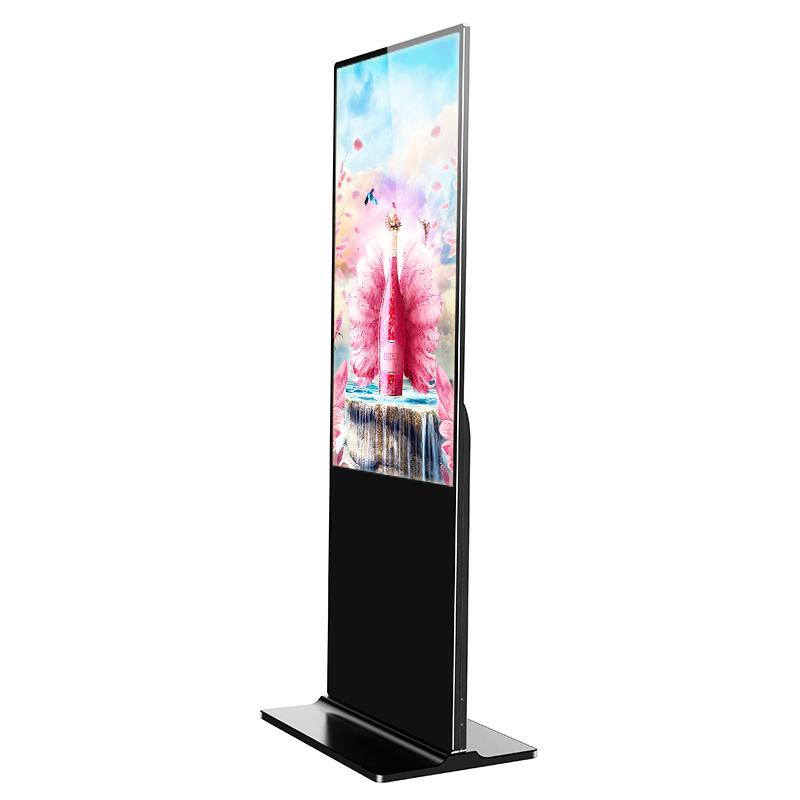
| Component | Description | Component | Description |
|---|---|---|---|
| Touchscreen Display | The primary interactive interface, available in various sizes and resolutions. | Processor | The central processing unit (CPU) that powers the kiosk, ensuring smooth performance. |
| Enclosure | Protective housing for all internal components, customizable in material, color, and branding. | Operating System | Software platform (e.g., Windows, Android, iOS) that manages hardware and software resources. |
| User Interface (UI) | The on-screen design and navigation elements for user interaction. | Peripherals | Additional hardware such as card readers, barcode scanners, receipt printers, and NFC/RFID readers. |
| Connectivity | Options for network connections including Wi-Fi, Ethernet, and Bluetooth. | Security Features | Measures such as tamper-proof designs, secure locks, and data encryption. |
| Power Supply | The electrical system providing power, often with battery backup options. | Mounting Solutions | Installation methods like floor-standing, wall-mounted, or countertop mounts. |
| Speakers and Microphone | Audio components for voice commands, video playback, or customer interactions. | Cooling System | Mechanisms to prevent overheating, ensuring efficient operation. |
| Remote Management Tools | Software for monitoring, updating, and troubleshooting the kiosk remotely. | Accessibility Features | Adjustable height, braille touchpoints, and voice command capabilities for ADA compliance. |
| Data Collection Tools | Integrated systems for collecting and analyzing user interaction data. | Printer | For printing receipts, tickets, or other documents required by users. |
Retail: Self-checkout, product information, and promotions.
Hospitality: Check-in/out, local attractions, and dining recommendations.
Transportation: Ticketing, schedules, and wayfinding in airports and train stations.
Healthcare: Patient check-in, appointment scheduling, and health information.
Education: Campus maps, event schedules, and course registration.
Corporate: Visitor management, room booking, and company announcements.
Entertainment: Ticket sales, exhibit information, and interactive experiences in museums and theaters.
Government: Permit applications, information dissemination, and public service announcements.
Banking: ATM services, account inquiries, and digital signage for promotions.
Food Service: Self-ordering systems, menu displays, and loyalty program information in restaurants and cafes.


1. Operating System: Specialized OS for kiosk applications.
2. Kiosk Application Software: Provides UI and specific functionalities.
3. Content Management System: Manages and updates displayed content remotely.
4. Web Browser/Engine: Displays web-based content and applications.
5. Remote Monitoring Software: Monitors kiosk status and updates remotely.
6. Security Software: Ensures data protection and prevents unauthorized access.
7. Payment Processing: Integrates with payment gateways for transactions.

1. Approach the Kiosk: Walk up to the digital kiosk display.
2. Select Language (if applicable): Choose your preferred language for the interface.
3. Navigate the Interface: Use the touchscreen to browse options or input information as instructed.
4. Select Service: Choose the service or information you need from the available options displayed on the screen.
5. Follow Prompts: Follow on-screen instructions to complete tasks such as making a payment, accessing information, or interacting with applications.

1. Purpose and Functionality: Determine specific needs such as payment processing, information dissemination, or interactive engagement.
2. Hardware and Software Requirements: Assess required components like touchscreen capabilities, security features, and integration with existing systems.
3. Customization and Branding: Consider options for customizing the kiosk's appearance and user interface to align with branding and user experience goals.
4. Support and Maintenance: Ensure availability of after-sales support, warranty coverage, and maintenance services to ensure smooth operation and longevity.
Our commitment to after sales services includes:
1. Warranty: Comprehensive coverage for parts and labor.
2. Maintenance Services: Regular check-ups and on-site repairs.
3. Technical Support: 24/7 hotline and remote troubleshooting.
4. Software Updates: Ensure regular software updates to improve security, add new features, and maintain compatibility with evolving technologies.
5. Response Time: Guaranteed response within 24 hours
What did our happy clients say?
The touchscreen display kiosk has drastically improved our customer service. The intuitive interface is a hit with customers, and the installation was quick and hassle-free. Excellent product and support!
We are extremely satisfied with our new touchscreen kiosk. It’s sleek, responsive, and integrates seamlessly with our existing systems. Our customers appreciate the convenience, and we love the data insights!
Our outdoor touchscreen display kiosk works perfectly in all weather conditions. It's robust, user-friendly, and has significantly reduced wait times. The customer support team has been outstanding!
The touchscreen display kiosk has enhanced our retail store’s efficiency. The customization options allowed us to perfectly match our brand. The overall experience, from purchase to installation, was excellent!